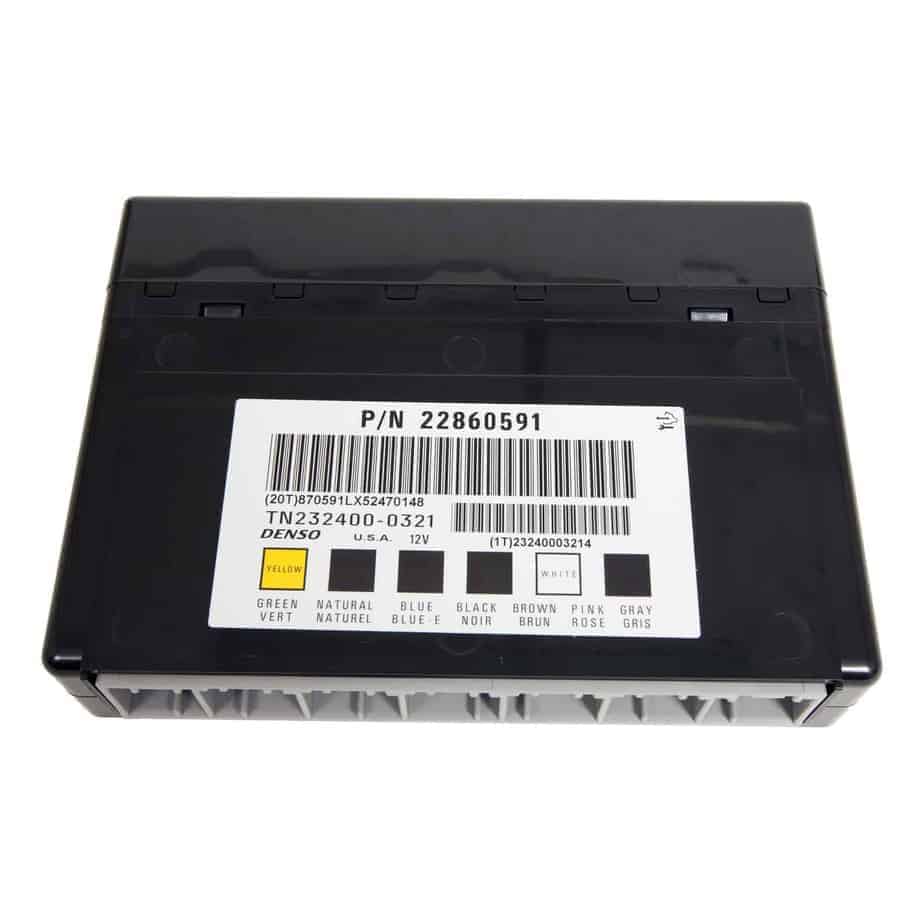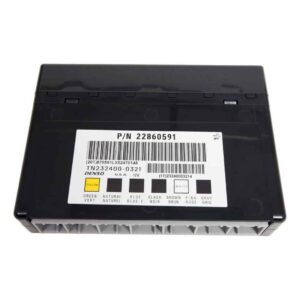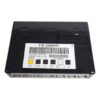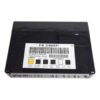Restore Full Electrical Function to Your GM Vehicle
If you’re dealing with a frustrating array of electrical gremlins in your 2010 Chevy Tahoe—from flickering interior lights and erratic power windows to a security system that won’t cooperate—the root cause is often a failing Body Control Module (BCM). As a technician with over two decades of experience, I’ve seen how a faulty BCM can turn a reliable vehicle into a source of daily headaches. The BCM is the central command center for your truck’s body electronics, and when it fails, it creates chaos. This isn’t just an inconvenience; it can affect vehicle security and safety systems.
We offer a straightforward and reliable solution. This Body Control Module, compatible with part number 15276271 and many others, is the definitive fix for these issues. The single biggest hurdle in this repair is typically the programming, which requires expensive dealership tools. We eliminate that problem entirely. Simply provide your vehicle’s VIN at checkout, and our experts will program the module with the latest GM software specifically for your 2010 Tahoe. It arrives at your door ready for installation, saving you hundreds of dollars and the hassle of a dealer appointment.
A Technician’s Notebook
Just last month, a 2010 Yukon (which uses the same platform as the Tahoe) was towed to my shop. The owner was at his wit’s end. The radio would turn on by itself, the door locks would cycle while driving, and sometimes it just wouldn’t start, with no codes from the engine computer. A deep scan showed a U0140 code—Lost Communication With Body Control Module. After verifying power and ground at the BCM connector, we confirmed the module itself was the culprit. Instead of a costly dealer part and programming fee, we installed one of our pre-programmed units. The entire job took less than an hour, and every single electrical issue was resolved. This is one of the most satisfying repairs because it solves so many problems at once.
Is Your Vehicle Showing These BCM Failure Signs?
- ✔ Erratic or non-functional power windows, door locks, and mirrors.
- ✔ Interior or exterior lights flickering, staying on, or not working at all.
- ✔ The security system or alarm acting up, or the vehicle not starting due to a security fault.
- ✔ Dashboard warning lights appearing randomly (e.g., ABS, Airbag).
- ✔ Diagnostic Trouble Codes (DTCs) related to communication loss, such as U0140, U0155, or other U-codes.
- ✔ Horn honking unexpectedly or not working when pressed.
Your Straightforward BCM Installation Guide
- Safety First: Always disconnect the negative terminal from your vehicle’s battery before starting any electrical work.
- Locate the BCM: On a 2010 Chevrolet Tahoe, the BCM is typically located under the driver’s side of the dashboard, near the steering column. You may need to remove a lower dash panel for access.
- Disconnect and Remove: Carefully unplug the electrical connectors from the old BCM. They have locking tabs that need to be depressed. Once disconnected, unbolt or unclip the old module from its mounting bracket.
- Install the New Module: Mount your new, pre-programmed BCM in the same location. Securely plug in all the electrical connectors, ensuring they click into place.
- Reconnect and Test: Reconnect the negative battery terminal. Turn the key to the ‘On’ position and test all body functions—windows, locks, lights, wipers, etc.—to confirm proper operation.
Important Post-Installation Steps
After installing your new 2010 Tahoe BCM, a couple of additional procedures are required to ensure all vehicle systems are synchronized and functioning correctly. This is critical for safety and performance.
- Airbag System Reset: An airbag warning light is common after a BCM swap. You must perform the ‘Setup SDM Primary Key in BCM’ procedure using a professional-grade bidirectional scan tool. This re-establishes the security handshake between the new BCM and the airbag system’s Sensing and Diagnostic Module (SDM).
- Brake Pedal Position Sensor (BPPS) Relearn: Some vehicles require the Brake Pedal Position Sensor to be recalibrated. This ensures the BCM receives the correct signal for brake light operation and stability control functions. This procedure can also be performed with a capable scan tool.
Note: If you are not equipped to perform these relearn procedures, a local qualified mechanic can typically complete them for you.
Will This Fit My Vehicle?
This BCM is a direct replacement for a wide range of General Motors vehicles. While this listing is focused on the 2010 Tahoe BCM, please verify your part number or match your vehicle from the list below. This module replaces part numbers: 10382479, 15093910, 15276271, 15299986, 15819552, 20815898, 25892622, and many more.
Frequently Asked Questions
What exactly does a Body Control Module do?
The BCM is a computer that manages and controls many of your vehicle’s non-engine related electronic features, such as power windows, locks, interior/exterior lighting, security system, wipers, and horn.
Is this module really plug-and-play?
Yes, for the most part. We handle the critical programming for you by flashing it to your VIN. After physical installation, you will need to have the required Airbag and Brake Pedal relearn procedures performed with a scan tool for full system integration.
Where is the BCM located on my 2010 Tahoe?
The BCM on the 2010 Chevrolet Tahoe is located under the dashboard on the driver’s side, typically attached to or near the steering column support.
Do I need to send my old BCM back?
No core charge or return is required for this part. You can purchase it outright.
Will this fix my check engine light?
Generally, no. The BCM controls body electronics, while the Engine Control Module (ECM) or Powertrain Control Module (PCM) manages engine and transmission functions that trigger the check engine light. However, a faulty BCM can sometimes cause communication codes that illuminate other warning lights.
What information do you need from me?
After you complete your purchase, we will need the 17-digit Vehicle Identification Number (VIN) from your vehicle to program the module correctly before we ship it.



